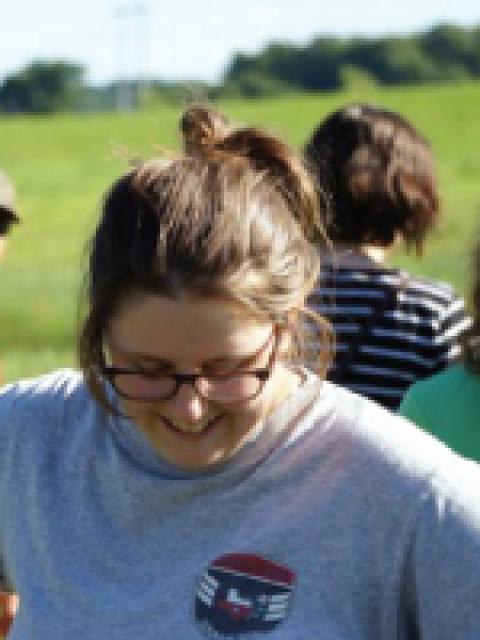
Madison Brantley
Anthropology at the Auburn University
Faculty Mentor: Tina Lee
Research Project: Community Capacity and Perceptions of Lake Health in Chetek, WI
Madison Brantley is from North Georgia near the Blue Ridge Mountains. She is currently finishing her last semester at Auburn University majoring in Anthropology, with a specific interest in medical anthropology. Growing up in the mountains sparked her passion for the environment, and the heavy tourism population exposed her to people from all walks of life. This played a major role in her decision to study anthropology, as well as environmental issues. Upon graduating, she plans to continue her anthropological studies by attending graduate school. In her free time, she enjoys reading, cooking, and binge watching Forensic Files.
Community Capacity and Perceptions of Lake Health in Chetek, WI
View Research Project Here
Over these past 8 weeks, I have learned many things from this community and the mentors in our REU program. While I had a pretty good sense of what research I would be doing, they guided me and my fellow REU students into thinking critically about our research. With my project specifically, I was to gain insight into the community of Chetek, WI in order to understand their perceptions of lake health, as well as what significance the lake has for the community itself.
To do this, I interviewed prominent stakeholders in the community such as business owners, Chetek Lake Protection Association members, Chetek Chamber of Commerce members, and lifelong residents of Chetek. In these interviews I asked a series of questions that would allow me to understand how they viewed the lake as a resource for themselves and the larger community. In a majority of the interviews when I asked about their thoughts on the lakes health, the respondents told me that that "the lake changes from year to year" or "the health really depends on the amount of rain we have." This was significant: their perceptions were defined by the physical appearance of the lake. In short, whenever they saw green on the water, or when they noticed the lake giving off a particular smell, they believed that the lake was then unhealthy, and when it rained, it would wash away the green and the smell, causing them to view the lake as healthier.
The issue with this is that while the lake does appear to look better when then it rains or the summer is wetter, this doesn't mean it is any healthier. The phosphorus pollution that is the root cause of the problem in the lakes’ overall health doesn't go away depending on the weather. It is always there even when it doesn't appear to be. Because of this perception, the community views the problem as variable, which leads to a lack of commitment to and effort toward cleaning up the lake. This lack of commitment creates a hole in Chetek's community capacity, which is a community's capability of addressing and solving problems. A solid understanding of a problem and a strong commitment to solving it is a key element in community capacity. If Chetek wants to find a way to aid the lakes health, and be proactive in not making it worse, it needs to have commitment within the community. There needs to be a common understanding of what is wrong with the lake, rather than a grouping of different misconceptions among the members of the community. This can be achieved through more communication among the organizations in the area, as well as an understanding that the lake is polluted, and that the green on the lake can happen at any time, it just hasn't yet.
On the plus side, I also began to learn about the other elements of community capacity that are present in Chetek: resources and skill. Chetek has several vibrant community organizations that are engaged in working towards better water quality in their lakes. There is a (small at this point) group of citizens working on the problem who bring a host of leadership, fundraising, and planning skills to the table. These are hopeful signs, and, if coupled with a broader commitment to lake health, would put Chetek in a good position to make significant changes.
From gathering these conclusions, I gained a better sense of what it means to be a cultural anthropologist performing field work, and because of this research, I was able to learn about and appreciate this unique community. This REU is an experience I will never forget, and I know participating in this has made me a more skillful researcher, on top of allowing me to have so many more new people in my life that I can now call my close friends.
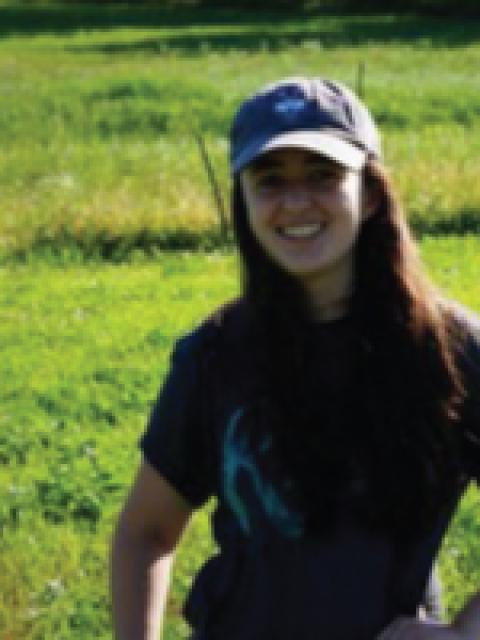
Caitlin Delaney
Economics and Geography at the University of Connecticut
Faculty Mentor: Chris Ferguson
Research Project: Water Quality Policy Implications and Funding Opportunities
My name is Caitlin Delaney and I am an undergraduate studying Economics and Geography at the University of Connecticut. The intersection of these subjects led me to the LAKES REU with its focus on environmental policy and the relationship between economics and the environment. When not in school I enjoy spending time outside, watching basketball, and traveling. Participating in this REU helped expand my research interests to include environmental economics along with development economics, sustainability, and urban/regional planning.
Water Quality Policy Implications and Funding Opportunities
View Research Project Here
I spent this summer with two other economics REU students looking at how water quality would affect the economy in a number of ways. I focused on funding opportunities for water quality improvement and the impact that water quality has on Chetek businesses.
We sent surveys to Menomonie and Chetek residents in order to determine whether they would be willing to pass a .1% tax increase that would go towards water quality improvement. From their responses, we found that residents were supportive of local and county sales tax increases. If a sales tax increase of .1% were to pass, Dunn County and Barron County would receive an additional $440,636 and $713,305 respectively in annual sales tax revenue. Similarly, if a county property tax increase of .1% were to pass, Dunn County and Barron County would receive an additional $935,045 and $1,025,568 respectively in annual property tax revenue. While these numbers may seem dauntingly large at first glance, the average resident in Dunn County would only have to pay an additional $10 annually for the sales tax increase and $155 annually for the property tax increase. In Barron County, the average resident would pay an additional $15.60 annually in sales tax and $135.60 annually in property tax. These numbers show that while the cost to the individual would be relatively low, the county would be able to generate a large amount of revenue that could be spent on water quality improvement efforts.
The TMDL plan established by the Red Cedar River Water Quality Partnership outlines various Best Management practices along with their cost and amount of phosphorus they would reduce. Money earned from additional tax revenue could go towards funding some of these practices. Conservation tillage, for example, would reduce phosphorus by 63,000 pounds a year and much of the cost could potentially be covered by these small tax increases. More than anything, this research helped show that local residents are willing to help fund initiatives to improve regional water quality.
Our research of Chetek businesses showed that water quality in the area greatly affects local businesses. If the water quality were to improve, the amount of sales revenue and employment during peak summer months would grow in most industries. In fact, summer sales revenue for retail stores was projected to increase 185% by the local business owners. On the other hand, a decrease in water quality—marked by an increase in algae blooms—would have a strong negative impact on local businesses. Retail business owners projected that a decrease in water quality would decrease sales revenue by 168%. These numbers show that improved water quality wouldn’t just increase recreational enjoyment, but it would also create growth in the local economy.
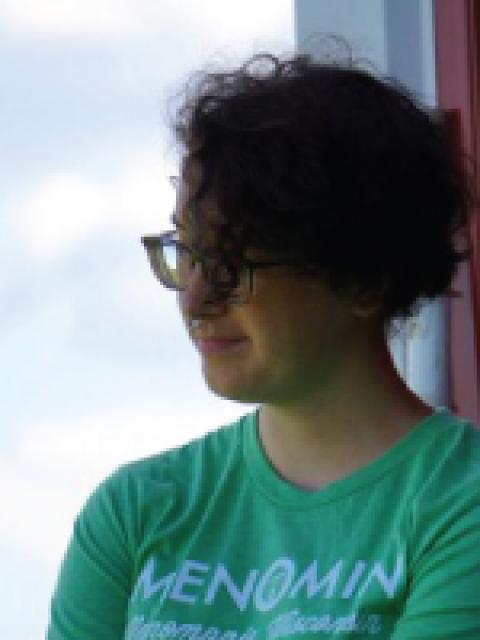
Laura Donovan
Applied Social Science at the University of Wisconsin-Stout
Faculty Mentor: Tina Lee
Research Project: Oral History of Lakes Menomin and Tainter
Laura Donovan studies Applied Social Science with a Concentration in Sociology and Anthropology at the University of Wisconsin-Stout. She is passionate about community building and the intersectionality of social and environmental justice. Through her research this summer with other LAKES students, she was able to investigate both of these things from a new angle. After graduation, she plans to continue learning - maybe as a graduate student and maybe not. She thrives when she can be outside, and probably won’t pass up the opportunity to take a bike instead of a car.
Oral History of Lakes Menomin and Tainter
View Research Project Here
This summer, I focused on oral history of the Red Cedar Watershed, and, more specifically, Lakes Menomin and Tainter. But what is oral history, you ask? Oral history is much like written history; it has its own slants and perspectives depending on the source. Unlike written history however (you might have guessed), it is spoken. By collecting accounts of the past through interviews, one can gather an understanding of the past as well as of the significance that people place on certain events, people, or places depending on how much or little they talk about them. Through analyzing accounts of the lakes and how they have changed, I came to a greater understanding of how these views affect actions in the present.

A postcard from the mid-1900s featuring "the old swimming hole" at Wakanda Park
Over eight weeks, I interviewed more than 10 people in the Red Cedar Watershed, read interview transcripts conducted by previous REU students, attended public meetings relating to the lakes, did archival research, and took a lot of field notes. As I and my research partner, Madison Brantley, started wrapping up data collection, we also started analyzing the data we gathered. The data filled various roles in my research. I analyzed the interviews to get an idea of how people talk about the lake health and how it has changed as they’ve known it. I used the information I found in the archives to fill in the spaces of what people didn’t say in interviews. The archives proved to be a useful resource that allowed me to gather a fuller understanding of the lakes’ history. By participating in public meetings, I experienced what sort of things are being done in the present to address lake health.
After all of that - data gathering, coding, and analyzing - I drew a few conclusions.
- Personal experience, strength of memories, and sense of place influence how people perceive current lake health, what they think should or can be done about declining lake health, and how they are involved in lake clean-up efforts.
- Based on the interviews conducted, the dominant theme is that the lakes have gotten worse. Most people expressed that they were unsure of how to move forward in addressing declining lake health, however, even if they are involved in a lake protection organization.
- Even though uncertainty exists for a variety of stakeholders, steps are being taken to slow the declining lake health.
People who have lived in the area certainly had stories to share, but what comes with that is a sense that the lakes have gotten worse and there’s too much to do in order to reverse that decline. Thus, it can seem to be an insurmountable problem. Result: little movement forward.
There was also a sense, among other participants, that the lake has always been green, and, since we don’t know how to begin to address that, it’s an insurmountable problem. Result: also little movement forward.
There was even a small sense for some that the lakes have improved, and there isn't anything to be done. Result: you already know - little movement forward.
My archival research, on the other hand, yielded a lot of information about how Lakes Menomin and Tainter have been a vital part of the community. There were beaches, bait shops, boat rental locations, and even a boat house on Lake Menomin in the past. A triathlon was held until 2006, and generations of Stout students have enjoyed events on the lakes. Despite a feeling that the problem is insurmountable, there is a history to draw on for inspiration.
Why does this matter? Some community members feel frustrated about lake health and don't know how to proceed. Can't we move ahead anyway? Well, yes, you can try to do that. But a very important part of this is that the lakes are a part of the community, and it's unlikely that people in the community will choose to be involved in something that feels like an uphill battle. What is needed to move past this impasse is more education so the community can understand what is going on. We must work to build a consistent community understanding about the lakes' present health. For example, educational events about the history of the lakes could be held in order to establish a consistent, unified narrative in the community about the lakes' history as a community center as well as a clear vision for the future. In this way, people can better comprehend the situation, and are more likely to come together for such a worthy cause.
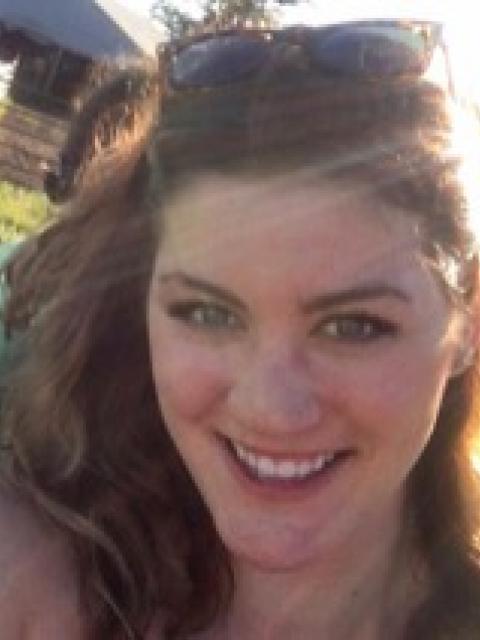
Alexis Econie
Sociology and Communication at the Illinois State University
Faculty Mentor: Nels Paulson
Research Project: Power in Connectivity: Social Capital and BMP Lease Agreements
Alexis Econie is a senior undergraduate student double-majoring in sociology and communication at Illinois State University. Her interests in sociology spur from a natural curiosity about the social world, and her involvement in research around the agricultural and environmental dimensions of social research take inspiration from her upbringing in the “Soybean Capital of the World,” Decatur, Illinois. When she’s not at the library or in the research lab, Alexis enjoys hiking, canoeing, tending to her many houseplants, and drinking entire pots of coffee in one sitting. Alexis will graduate in May 2016 with honors and as the recipient of high-ranking university awards such as the Robert G. Bone scholarship and the John A. Kinneman scholarship. After graduation, Alexis plans to continue her education by pursuing a graduate degree in sociology.
Power in Connectivity: Social Capital and BMP Lease Agreements
View Research Project Here
It’s been said that we are the product of the five people with whom we spend the most time. In my case, I am (very luckily!) the composite of my kind and talented research partner, Clare Salerno, my brilliant and enthusiastic research mentor, Dr. Nels Paulson, my two charming roommates, and, of course, the houseplant that sat atop my desk as I researched Non-Operating Landowners and BMP Lease Agreements in Dunn County and Baron County at the University of Wisconsin-Stout this summer.
While the idea of reproducing the values and characteristics of the people we hang around most seems obvious, it has powerful implications in every scenario to which it is applied—be it the workplace, personal relationships, or land use. In the case of our research, we found that Non-Operating Landowners who have close relationships with their tenants and are connected to other Non-Operating Landowners through groups and organizations (such as Farmer’s Unions, sportsman’s clubs, and church groups) are more likely to include Best Management Practices in their lease agreements with the farmers who rent out and farm their land.
Our research was motivated by curiosity about people who own farmland but do not farm it themselves. These Non-Operating Landowners (NOLs, as we called them) own roughly 40% of the farmland in the United States and rent it out to one or more tenants for farming. The relationships between NOLs and tenants are diverse. After mailing surveys to over 900 non-operators who own land in Dunn and Barron counties, we observed NOL-tenant relationships that varied from “very close” to “very distant”—with some NOLs requiring written lease agreements, while others were satisfied with a verbal promise of stewardship and a handshake. What most interested us, however, was why some of these lease agreements required Best Management Practices (BMPs) while others did not. BMPs are conservation practices used in farming (no-till, cover crops, grass waterways, manure management, etc.) that help preserve the land being farmed, keep the soil on the land, and contribute to cleaner and healthier streams, lakes, and rivers in the watershed. As BMPs play such an important role in watershed health, we were eager to uncover the factors that motivated NOLs to include these practices in lease agreements with their tenants.
We found that NOLs who have closer relationships with their tenants were more likely to include BMPs in their lease agreements. Further, NOLs who were involved in organizations and groups were also more inclined to include BMPs in their lease agreements. These social interactions among NOLs and from NOL to tenant are very important for knowledge transfer about land management and for shared value of land conservation and BMP usage. Perhaps most importantly, those who have a high sense of trust in their neighbors and trust in the local community in the watershed are more likely to have BMPs required in their lease agreements.
So what do we do with this information? Being informed and aware is certainly a step in the right direction, but what does knowing this information really do to help clean up the Red Cedar Watershed?
We must take action. It is important for NOLs to become more civically and socially engaged for both long-term vitality of their land and for the betterment of the watershed. Just as members of a book club meet on a regular basis to exchange opinions and discuss ideas about the books they have most recently read, there needs to be a space for Non-Operating Landowners to congregate and discuss matters relating to their land practices and their relationships with their tenants. NOLs need to be connected to one another and to their tenants so that they can discuss matters relating to their land and then apply them.
Such civic engagement does not even need to be within environmental organizations or farming organizations for this knowledge transfer to occur—other organizations, like rotary club or church, can likely function in these ways for NOLs, too.
We all know that the people with whom we spend our time shape our ideas, values, and actions—but what many of us do not see is that moving toward a cleaner watershed may be as simple as getting people connected and civically engaged. And now the evidence is in—we must do so. Wisconsinites are renowned in this country for their commitment to one another. The desire for strong communities has historically driven Wisconsin’s remarkable agriculture, tourism industry, education system, and environmental movements. So, Wisconsinites, let’s get connected!
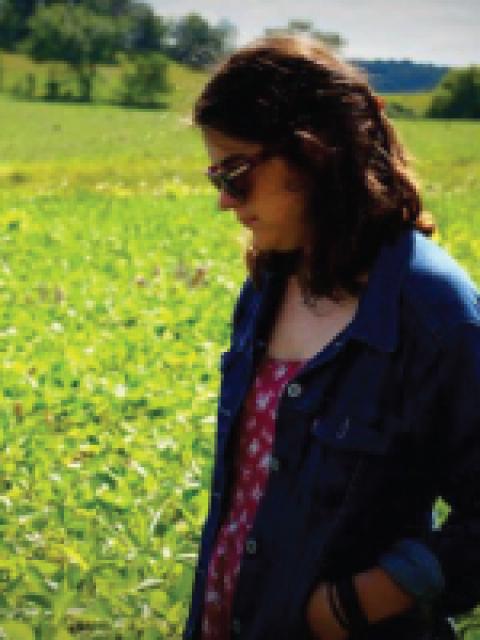
Helena Pedrotti
Economics at Reed College
Faculty Mentor: Chris Ferguson
Research Project: Algae and Real Estate: Hedonic Pricing Analysis
My name is Helena Pedrotti and I anticipate a B.A. in Math and Economics from Reed College in Portland, OR in May 2017. After graduation I hope to pursue a PhD in economics with a bend towards behavioral economics, family economics, or public policy. When I'm not doing economics or math related things, I can be found rock climbing, operating a nuclear reactor, playing soccer, or reading.
Algae and Real Estate: Hedonic Pricing Analysis
View Research Project Here
This year the economics research group of the LAKES REU, in part, looked at how the housing market is affected by the algae problem in Lake Menomin and Tainter and the results were clear. The housing prices in Menomonie are much lower than they would otherwise be because of the presence of the algae blooms, especially the lakefront homes.
We used a technique called hedonic estimation in order to isolate the effect of the lake on housing prices. Essentially it works by pulling out everything that affects the cost of a house; number of bedrooms, bathrooms, square footage, region, lot size, garage size, etc., and utilizing regression techniques to see how each individual attribute affects the price of a house.
The median non-lakefront house in Menomonie is actually more expensive, around $133,055, versus $121,869 in the Chetek area and $107,100 around Cumberland. This is capturing the differences in desirability of the area, local labor market effects, and other area-wide idiosyncrasies. However the story changes when lakefront houses are considered instead. The typical lakefront house in Menomonie is worth $169,078, while in Chetek is worth $170,927, and is worth $175,215 in Cumberland.
The lake premium is the difference between the lakefront and non-lakefront house within each region. The lake premium is what reveals the cost of poor lake quality and the estimated values reflect this. Cumberland’s lake premium, with the clearest major area lake in our study, is around $68,000, while Chetek’s is around $49,000, and Menomonie's is only $36,000. This suggests that if Menomin and Tainter were as clean as the lakes in Cumberland, the typical waterfront house would increase in value by $32,000.
The lake premium results match what we would expect from water quality of the areas, which we measured by Secchi depth. Secchi depth measures water quality by looking at how clear the water is. The higher the number, the clearer the water. The Cumberland area has by far the best water quality with summer Secchi depth readings averaging between 8 and 13 feet. Measurements of lakes in the Chetek chain have the most variety with summer averages between 2 and 10 feet. Lake Menomin and Tainter both have the lowest average, which is around 3 feet in the summer.
Our model also analyzed how much the value of a house would increase if the lake it were on increased in clarity. For each additional foot of Secchi depth, the housing value of a waterfront house goes up by $3,650.
While this increase would cause some waterfront homeowners to spend more in property taxes, the added amount of property taxes would only be a bit more than $3.65 per house or slightly less than a non-happy hour beer at the Raw Deal. Aggregated, that $3.65 per lakefront house would be a huge, meaning more money for schools and community projects without increasing the overall tax rate.
Even though our analysis failed to conclusively establish numbers for the houses that are not directly on the water, in part because it is difficult to separate from regional effects, it is highly likely that their value would also increase substantially though not as much. Future research will continue to explore this question.
It’s important to note that perhaps the most valuable part of this research is how it reveals how much people value clean lake water by looking at behavior instead of asking them explicitly. Our survey results indicated that people often understated how much they were willing to pay to clean up the water but by looking at market behavior, we are able to get a more accurate estimate. Clean lake water is worth more to people than they perhaps realize.
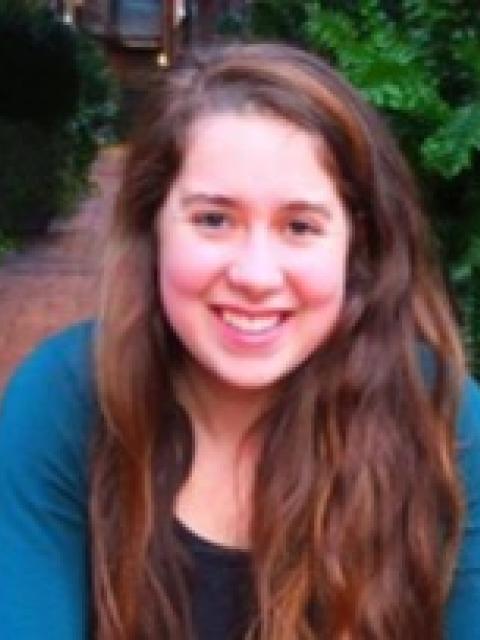
Clare Salerno
Sociology and Environmental Studies at Wellesley College
Faculty Mentor: Nels Paulson
Research Project: Intersecting Identities and Land Meanings: BMP Use Among Non-operating Landowners
Clare Salerno studies Sociology and Environmental Studies at Wellesley College in Wellesley, MA and hails from the spine of the Green Mountains in Johnson, VT. Her decision to study these fields can be boiled down to an interest in "people and places." She plans to graduate in the 2018, and hopes to work, travel, and attend graduate school in a to-be-determined field that combines her many interests. Currently, she looks forward to studying abroad in Dakar, Senegal in spring 2017. A member of Wellesley's Cross Country and Track & Field teams, she enjoys running and the many challenges and opportunities for adventure it offers. Besides that, she spends time baking and crafting with friends, debating politics, reading, and searching out Boston's best food and study haunts.
Intersecting Identities and Land Meanings: BMP Use Among Non-operating Landowners
View Research Project Here
40% of farmland in the United States is rented out, mostly from Non-Operating Landowners (NOLs), or people that own land but do not themselves farm it. Nearly ⅔ of these NOLs are over the age of 65. NOLs represent a sizeable, but vastly understudied, portion of landowners in the United States, and my research as part of the sociology team this summer focused on use of conservation agriculture Best Management Practices (BMPs), such as conservation tillage, cover crops, buffer strips, and nutrient management plans, among others, on farmland owned by NOLs.
Our initial research questions sought to discern how factors like age, gender, conservation values, and relationship with one’s tenant affect BMP use and BMP lease agreements. These questions guided our decision to talk to widowed women NOLs and framed the questions we asked NOLs in our survey. Ultimately, my project aimed to understand how the intersecting identities and meanings NOLs associate with their land, as collected through survey and interview data, predict the levels of BMP use on their land.
My research partner Alexis Econie and I interviewed seven widowed women NOLs in the Red Cedar Watershed. We asked each of them the question, “What does your land mean to you?” Interviewees provided a variety of answers ranging from tax money, income, family memories, an attachment to place, and something to take care of. However, we found that throughout the conversations, interviewees often ended up focusing on the importance of many aspects of their land. Those that said outright their land provides income spent more time talking about their family and vice versa. From these responses, it became clear that NOLs associate a multiplicity of intersecting meanings with their land, and we turned to the survey results from over 100 survey respondents in order to capture how these various identities might affect BMP usage.
Our statistical model demonstrates that NOLs with higher incomes, higher self-described conservation values, that are located inside the watershed, and are women who talk to their renter about what is being produced on their land use 68.2% of possible BMPs. Those with average incomes and conservation values, who live outside the watershed, and are women who do not talk to their renter about what to produce only use 0.57% of possible BMPs.
This tells us a few important things. First, as NOLs increasingly represent a population on Social Security, financial stability matters for BMP use. Interviewees noted that neither Social Security nor income land provides enough income by themselves to get by, and survey data shows that those making more money off their land use more BMPs. If we want more people to use BMPs, the baby boomer generation must be able to retire comfortably and maintain reliable sources of income.
Second, it’s important for women NOLs especially to talk to their renters about what to produce on the land. When controlling for all the other factors mentioned above, when women have this conversation with their renters they use about 44% of possible BMPs, compared to only 6% when they do not ask their renters about what they produce. The organization Women Caring for the Land, originally based in Iowa, hosts workshops for women landowners, and our results indicate the potential benefits their work could have for the Red Cedar Watershed. Empowering women NOLs should become a priority for conservation and water quality improvement.
Finally, location matters. NOLs located in the Red Cedar Watershed reported higher BMP use, when controlling for noted factors. The landowners we spoke to felt an attachment to their land and harbored a keen sense of place and love of the area. Further efforts to improve water quality should build upon and speak to the attachment landowners have to this area and try to spark a connection with those located further away.
Overall, policy efforts should take into account actors like NOLs who may not have previously been targeted as a group with the power to encourage BMP use and set the tone for conservation agriculture in the watershed. Empowering women, promoting higher incomes, and encouraging a sense of community and place among NOLs can help make water quality improvement goals a reality.
I sit here writing this in my home state of Vermont. While I am often happiest here in the mountains, I am definitely missing the rolling hills and open skies of Menomonie as well as all the people that make it such a vibrant community. At the community forum at the Raw Deal in early August, so many people thanked us for coming and for our research, but we really ought to be thanking you for bringing us to Menomonie, teaching us about the place you call home, caring about the work we do.
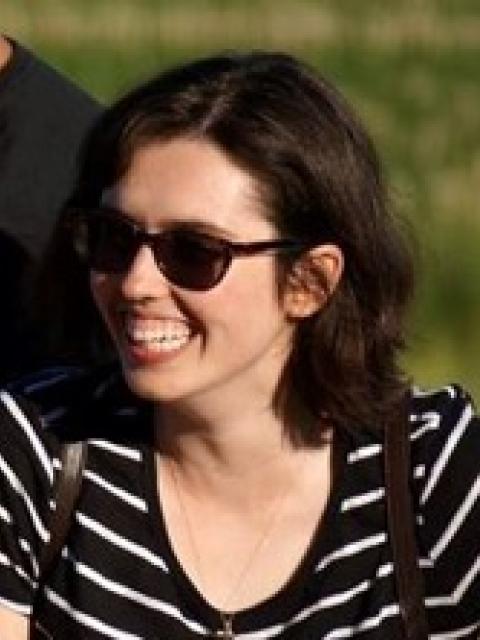
Mackenzie Jones
Mathematics at the University of Akron
Faculty Mentor: Keith Wojciehowski
Research Project: Forecasting Blooms and Modeling Chlorophyll Concentration
My name is Mackenzie Jones. I'm a junior applied mathematics major at the University of Akron and I have a strong interest of going to graduate school after I finish my undergrad degree. I'm really interested in how math can be used to model everyday problems and come up with creative solutions. I also love how versatile math is and can be used to describe and solve problems in biology, chemistry, physics, and economics. When I'm not in school I enjoy reading, hiking, golfing, and painting.
Forecasting Blooms and Modeling Chlorophyll Concentration
View Research Project Here
I worked on mathematical models for forecasting chlorophyll concentration and finding a condition for blooming. Mathematical models help with understanding important processes that govern chlorophyll concentration. These models are analyzed by considering all relevant variables on the same time and length scale to determine the relative impact of each physical process. This normalization yields non-dimensional parameters that assist in the interpretation of analytic and computational results. We analyzed data from past REU students and the DNR to use in our models. We modeled chlorophyll growth because there is a direct relationship between chlorophyll and algae counts because algae produces chlorophyll as a by-product of photosynthesis and chlorophyll is more easily measured.
The forecasting model predicts how long after a large flushing event it takes for the lake to turn green and smelly if there’s no rain. We used a logistic growth model to capture longer term algae growth and a carrying capacity was estimated by looking at how much the algae can grow if there’s no nutrients for them to consume. We ran 100 simulations varying the carrying capacity and then the growth rate. We found the most variation when the carrying capacity was varied but in all simulations we found that it takes about 3 weeks to hit the carrying capacity level, which corresponds well with data collected from past REUs and the DNR.
The bloom condition was found by solving an equation that describes chlorophyll growth over time based on its growth and movement. The bloom condition was found by solving the equation analytically and was found to rely on secchi depth and the ratio between growth rate and turbulence. The equation was also solved numerically using computer programming and found very similar results to the analytic solution.
Both of these models can take proposed solutions to the algae problem and test how effective they would be at preventing blooms. Both models advocate increasing turbulence and flow in the lake, and the bloom condition models also suggest lowering the algae growth by limiting phosphorus and nitrogen coming into the lakes.
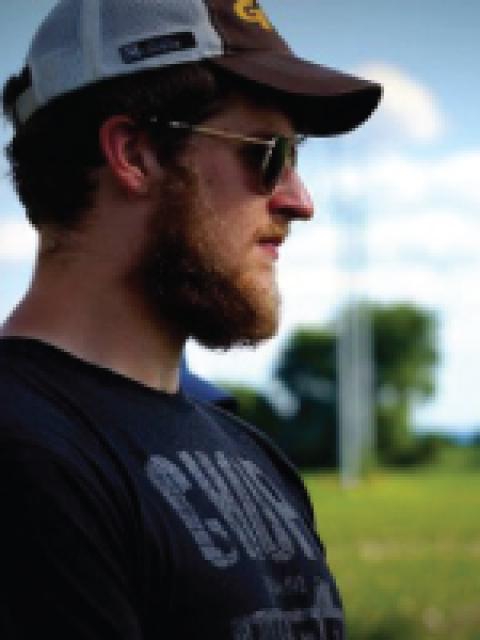
Gunther Melander
Applied Social Science at the University of Wisconsin-Stout
Faculty Mentor: Innisfree Mckinnon
Research Project: A Tale of Two Watersheds: Mapping Farmer Networks
I am a Applied Social Science major with a concentration in History and Politics with a minor in Geographic Information Systems (GIS) at the University of Wisconsin-Stout. My passions include environmental activism and building collaboration within communities. When not at work, you can find me either teaching martial arts, going for a run on the Red Cedar Trail, or drinking copious amounts of coffee. After graduation, I plan on taking some time after I finish my undergraduate degree to get my bearings…and to spend time in the woods.
A Tale of Two Watersheds: Mapping Farmer Networks
View Research Project Here
Interdisciplinarity was the nature of my work this summer, looking to see if there was a correlation between social distance and geographic distance within the farmer’s social networks in the Red Cedar Watershed. Last summer the sociology team surveyed farmers in the watershed to ask them about their land management practices and who they trust for farming advice. These surveys asked about Best Management Practices (BMPs) that keep soil and nutrients on the land and out of the waterways, potentially improving farm yields and water quality in Lakes Tainter and Menomin. The surveys also asked about interest in learning about conservation agriculture and who farmers talk to about farming practices within the Red Cedar watershed. Why does this information matter? By understanding the lines of communication among farmers we can see avenues for expanding BMP use across the watershed, as well as how to effectively share information about conservation agriculture.
My analysis expands on the work of the sociology team, looking at both farmers’ social networks and how farmers connect geographically. That is, is there a correlation between social distance and geographic distance? In other words, do farmers trust people who live close to them, and how does this influence their BMP use in different parts of the watershed?
I started my work by getting familiar with the survey that created the farmer social network, as well as prepping those data for spatial statistical analysis in a geographic information system (GIS) software called ArcMap. In ArcMap I looked to see if there was a spatial autocorrelation, which measures the geographic distribution of farmer’s survey responses within the watershed and identifies areas of clustering.
From my analysis of the farmer social network, I found that there is a contrasting relationship between two sub-watersheds within the Red Cedar. On one hand, the Lower Pine Creek-Red Cedar shows a high clustering of farmers who would be interested in learning about conservation agriculture, soil health, and economic projections for their farms, while at the same time having higher than average BMP usage. They also are more connected with farmers outside of their sub-watershed. On the other hand, Hay River showed a less interest in educational programs, more connections within their sub-watershed, as well as average BMP usage in general.
From what I’ve found, we can start answering questions like: What are the differences between these two sub-watersheds in terms of geography, and society? Why are farmers in one more interested in conservation than the other? With this information, we can better understand how to work with farmers to expand conservation agriculture across the Red Cedar Watershed, keeping the nutrients on the land and the water running clear and clean.

Rene Torres
Geography at California State University
Faculty Mentor: Innisfree Mckinnon
Research Project: Identifying Changes in Land Use and Highly Erodible Soil
My name is Rene Torres. I am a senior at California State University, Northridge. I am a Geography major with emphasis in Geographic Information Systems and a Sustainability minor. Like most of us I love to be outside, but I love being inside working on GIS just as much. Upon graduation I plan on getting a job as a GIS technician/specialist and maybe pursuing grad school in the future. When I’m not in the GIS lab I’m at home watching movies, listening to music, or hiking the Santa Monica Mountains. On the weekends I like to go to the beach and go to concerts.
Identifying Changes in Land Use and Highly Erodible Soil
View Research Project Here
As part of the geography team, my task was to map highly erodible soils, and to get an estimate of how much phosphorus went into the waterways due to land use change from 2011 to 2015. This was done using a Geographic Information System (ArcGIS), which is computer software used to map and analyze spatial data. GIS data comes in the form of layers, which contain an attribute table describing the features of the data.
To map highly erodible soils, I first had to download the soils data layer for the state of Wisconsin. This layer uses polygons to visualize the shape and area of the different types of soils. It contained a field in its attribute table with a code for its soil type. These codes vary by county, so in order to find out which ones were highly erodible, I contacted NRCS district conservationists for counties in the Red Cedar Watershed and asked them for their list of codes for highly erodible soils. I then selected the different codes from the table using a tool called Select by Attribute, and exported that data into a new layer containing only highly erodible soils. I found there were about 418,000 acres of highly erodible soils in the Red Cedar watershed.
To estimate how much phosphorus was going into the waterways due to changes in land use, I had to find out how much land changed from grassland to cropland. The reason behind this was that no topsoil is lost when there is grass or pasture, but when the land gets farmed and plowed, there is significant loss of topsoil. Plowing leaves the soil exposed to the elements and when it rains, this soil erodes and washed out into the waterways. This soil contains phosphorus, which is what causes the algal blooms. To calculate the change between these two types of land cover, I downloaded satellite imagery from 2011 and 2015 from the USDA. This imagery was classified according to the type of land cover and the different types of crops. I reclassified the two images into two classes, grassland and cropland. I then input these two images in Image Analysis and used the Difference tool, which resulted in a map with three classes: change from grassland to cropland, change from cropland to grassland, and no change.
When I calculated the area I found that 8,738 acres changed from cropland to grassland, and 82,047 acres changed from grassland to cropland. Assuming farming at state standards, this means 1,312,752 tons of topsoil were lost from 2011 to 2015. Taking the average soil P test for Dunn and Barron counties of 52ppm, we can estimate 75.25 tons of added phosphorus to waterways. Finally, I reclassified one more time to get only cropland, and overlayed this layer with the highly erodible soils layer and calculated the area. I found that about 85,000 acres (20%) of highly erodible land are being farmed on.
The maps I produced can help illustrate what happens when there is a big increase in farming. This increase can potentially be explained by rising corn prices. My research found that enrollment in conservation programs such as CREP decreased as prices in corn increased. My map of farmland on highly erodible soil can also help in identifying which areas to target for a bigger push in conservation agriculture.




